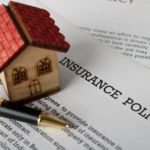The Federal Aviation Administration has finalized the first operational rules for routine commercial use of small unmanned aircraft systems or drones opening pathways towards fully integrating UAS into the nation’s airspace.
The rule promises to generate more than $82 billion for the U.S. economy and create more than 100,000 new jobs over the next 10 years, according to the trade group Association for Unmanned Vehicle Systems International (AUVSI).
The new rule, known as Part 107, which takes effect in two months, offers safety regulations for unmanned aircraft drones weighing less than 55 pounds that are conducting non-hobbyist operations.
“We are part of a new era in aviation, and the potential for unmanned aircraft will make it safer and easier to do certain jobs, gather information, and deploy disaster relief,” said U.S. Transportation Secretary Anthony Foxx.
The FAA says the provisions are “designed to minimize risks to other aircraft and people and property on the ground.”
The regulations require pilots to keep an unmanned aircraft within visual line of sight. Operations are allowed during daylight and during twilight if the drone has anti-collision lights.
The new regulations also address height and speed restrictions and other operational limits, such as prohibiting flights over unprotected people on the ground who aren’t directly participating in the UAS operation.
The FAA will waive some restrictions if an operator proves the proposed flight will be conducted safely under a waiver. The FAA said it will make an online portal available to apply for these waivers.
“With this new rule, we are taking a careful and deliberate approach that balances the need to deploy this new technology with the FAA’s mission to protect public safety,” said FAA Administrator Michael Huerta. “But this is just our first step. We’re already working on additional rules that will expand the range of operations.”
Under the final rule, the person actually flying a drone must be at least 16 years old and have a remote pilot certificate with a small UAS rating, or be directly supervised by someone with such a certificate. To qualify for a remote pilot certificate, an individual must either pass an initial aeronautical knowledge test at an FAA-approved knowledge testing center or have an existing non-student Part 61 pilot certificate. If qualifying under the latter provision, a pilot must have completed a flight review in the previous 24 months and must take a UAS online training course provided by the FAA. The TSA will conduct a security background check of all remote pilot applications prior to issuance of a certificate.
Operators are responsible for ensuring a drone is safe before flying, but the FAA is not requiring small UAS to comply with current agency airworthiness standards or aircraft certification. Instead, the remote pilot will simply have to perform a pre-flight visual and operational check of the small UAS to ensure that safety-pertinent systems are functioning property. This includes checking the communications link between the control station and the UAS.
Although the new rule does not specifically deal with privacy issues in the use of drones, and the FAA does not regulate how UAS gather data on people or property, the FAA said it is acting to address privacy considerations and encourages UAS pilots to check local and state laws before gathering information through remote sensing technology or photography.
As part of a privacy education campaign, the agency will provide all drone users with recommended privacy guidelines as part of the UAS registration process and through the FAA’s B4UFly mobile app. The FAA also will educate all commercial drone pilots on privacy during their pilot certification process; and will issue new guidance to local and state governments on drone privacy issues.
Part 107 does not apply to model aircraft.
Initial reaction from the UAS industry was positive. The AUVSI called the regulation a “significant milestone.” Others noted the rule puts the U.S. ahead of Europe when it comes to setting standards for drones.
Sarah Kreps, government professor at Cornell University and an expert on drones, characterized the regulations as “modest steps” to address routine commercial use of small unmanned aircraft but questioned how the government will enforce them.
“As drones have become cheaper, more accessible, and more sophisticated, the government has struggled to get a handle on how to regulate their use. In many ways, that’s a losing battle because of the sheer speed with which the technology — as well as how people use it — is changing,” Kreps said.
“What seems to be missing from the regulations is the issue of enforcement. Given the growing prevalence of drones, it is hard to see how the Federal Aviation Administration actually can ensure that these rules are followed,” she said.
Related:
FAA Commercial Drone Rule 107 Summary
Topics USA Legislation Commercial Lines Business Insurance Aviation
Was this article valuable?
Here are more articles you may enjoy.


 Viewpoint: Understanding the Future of Insurance by Studying the Past
Viewpoint: Understanding the Future of Insurance by Studying the Past  Homeowner’s Failure to Read Doesn’t Clear Agency of Negligence Claim
Homeowner’s Failure to Read Doesn’t Clear Agency of Negligence Claim  Companies Delay Impact Reports With DEI, ESG Under Attack
Companies Delay Impact Reports With DEI, ESG Under Attack  Size of Florida’s Slide Insurance Exec Compensation Has Tongues Wagging
Size of Florida’s Slide Insurance Exec Compensation Has Tongues Wagging 

